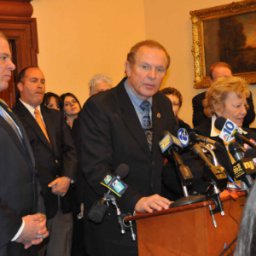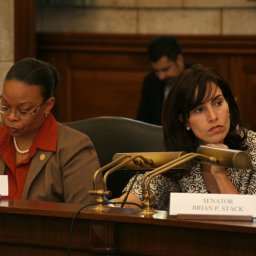TRENTON – Senator Raymond J. Lesniak, D-Union, the prime sponsor of S-1, legislation to abolish the Council on Affordable Housing (COAH) in favor of a fairer, market-driven model to comply with New Jersey’s Supreme Court’s Mount Laurel decisions, issued the following statement regarding a Senate Committee Substitute for his original legislation, S-1. The full text will be available to the public tomorrow:
“The New Jersey Supreme Court, in 1975, established the Mount Laurel doctrine, that municipalities had an obligation to provide by land use regulations realistic opportunity for low and moderate income housing. In 1983, Mount Laurel II was decided and the Court’s opinion reflected its frustration with the lack of effectiveness of its original decision, as if the Court could create homes of brick and mortar through judicial fiat. At that point, the Supreme Court became a legislative body.
“This was made all the more ironic by the wording of the Court’s decision: ‘unless a strong judicial hand is used, Mount Laurel will not result in housing, but in paper, process, witnesses, trials and appeals…We intend by this decision to strengthen it, clarify it and make it easier for public officials, including judges, to apply it…The waste of judicial energy involved at every level is substantial and is matched only by the often needless expenditures of talent on the part of lawyers and experts. The length and complexity of trials is often outrageous, and the expense of litigation is so high that a real question develops whether the municipality can afford to defend or the plaintiffs can afford to sue.’
“The Court then went on to legislate complex, by its own words, issues involving zoning and planning. In response to the complex holdings in Mount Laurel II, the Legislature passed the Fair Housing Act and established the Council on Affordable Housing, adding another level of oftentimes needless expense on government. The problem identified in Mount Laurel II – that Mount Laurel I resulted, not in housing but ‘in paper, process, witnesses, trials and appeals,’ was worsened by adding the expense of bureaucratic paper and process at both the state and local level.
“So here we are, 35 years later, with some success at production of affordable housing, but at an enormous cost to the taxpayers of the state and to the ability of the state to improve the general welfare of its residents.
“Both the Court and the Legislature failed at their attempts to provide realistic opportunity for low and moderate income housing without the unintended consequences of generating needless and excessive cost and impeding economic growth, job creation and revenue production. The Court and the Legislature failed because they produced a complex system that ate up scarce tax dollars and because they did not understand, nor apply, basic economic principles of real estate development.
“The Committee Substitute for S-1, unlike Mount Laurel II, the Fair Housing Act and COAH, is simple and is consistent with economic principles of real estate development.
“Firstly, it takes 50 percent of the municipalities out of the equation by recognizing they have a mix of housing choices reflecting that they have provided a realistic opportunity for low and moderate income housing.
“Secondly, it mandates that housing developments in the other 50 percent of municipalities set aside 20 percent of their units for affordable and workforce housing and that a zoning variance be granted for inclusionary housing developments, unless it would have a negative impact on health and safety.
“Thirdly, it requires that municipal approvals for affordable housing be given all reasonable inducements to make the development economically viable and, if it still is not economically viable, allows the HMFA, after reviewing the economics of the development, to reduce the affordable housing component to 10 percent. It also allows for 50 percent of the affordable housing component to be workforce housing which will help make the development of affordable housing more economically feasible and fill a need for our residents and for the economic vitality of the state.
“That’s it. The SCS for S-1 recognizes that no planning, no zoning, no projections, no fees imposed will produce affordable housing if it’s not economically viable. Imposing affordable housing requirements on market rate housing developments or fees on commercial, retail and industrial developments, that are economically untenable, will result in no housing being built of any kind and will result in less jobs, less economic growth and less revenue production for our state and for our residents.
“While litigation is unavoidable, it’s expected that the flexibility of compliance under S-1 will mitigate the need for it, including the preferences allowed for residents, workers in a municipality and low income seniors, as well as allowing off site location of the affordable units and rehab as an alternative to new construction.
“The SCS for S-1 has learned from the experience of the last 35 years, from the Mount Laurel cases to the FHA and COAH. I believe it has learned its lessons well.”






